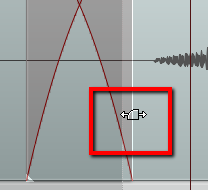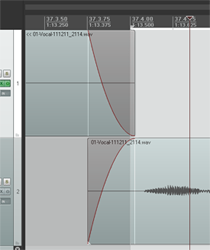This is an excellent microphone for home recording, especially for vocals/voice-over purposes. It gives professional sounding results for only about $149. This review contains audio samples and comparisons with a more expensive mic. My Star Rating –
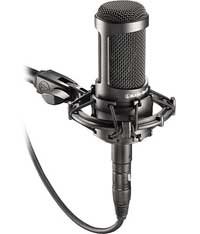
The Audio-Technica AT2035 is a large diaphragm condenser (LDC) microphone with a cardioid pickup pattern. (For a review of what a large diaphragm condenser mic is, see our post: What Are The Different Types of Microphones?)
The AT2035, which normally sells for $149, is an improvement on its less expensive sibling, the AT2020, which sells for $65, which is still a great value.
The capsule in the 2035 is a newer and larger design that gives a flatter response in the low (bass) frequencies and is overall more sensitive than the 2020. In fact technically, the AT2020 is not really a larger diaphragm condenser mic, even though it looks VERY similar. It’s only 16mm compared to the 24mm diaphragm in the 2035.
So What is Different?
For the extra 85 bucks or so you not only get a more sensitive mic with flatter low end and more sensitivity, but you also get a mic with less self noise, a much larger capsule, and some additional features thrown in for good measure. The 2035 gives you more control over the sound by offering two switches: a high pass filter (meaning that it reduces the low frequencies) switch at 80 Hz and a 10 dB pad, which lets you reduce the signal coming from the microphone by 10 decibels when you engage that switch. This function is pretty handy, especially if you’ve done all you can in a recording session to tame loud signals.
And that brings us to another improvement in this mic over the 2020, which is that it can handle a very loud signal (148dB of signal processing level (SPL) without the pad, or 158dB with the pad engaged) before it distorts. For a mic to be both very sensitive (can pick up very quiet sounds) and be able to handle that level of SPL is a good thing.
And finally, this mic comes with the shock mount in the box. This may seem like a small thing, but it gets very difficult to keep noise from traveling up a mic stand with sensitive mics like these if you just use a clip. A shock mount suspends the mic from a web of elastic bands, which keeps out a lot of low frequency noise. If you have ever had an LDC mic without a compatible shock mount, it gets to be a chore to find one and then order it and wait for it to come in, etc. So the fact that this mic comes with a shock mount is awesome and should be standard practice.
So How Does It Sound?
I always recommend that when they can afford it, folks get a large diaphragm condenser mic, along with a decent audio interface, if they want to produce professional audio. If you have less than $100 to spend, the AT2020 is an excellent choice. But if you can produce the extra 85 bucks, I highly recommend the 2035 because it sounds awesome.
I compared the AT to my Rode NT2-A, another LDC mic, one that I use daily. I recorded a short voice passage as well as some acoustic guitar. The first thing I noticed before anything else was that with everything else being equal (audio interface settings), the level of the AT was significantly higher than the Rode, which is saying something. That’s that sensitivity thing coming into play.
First the voice test. I just read some specs from the box for this. The 2035 sounded clear and present, very nice. Compared to the Rode (a mic costing almost 3 times more than the AT, by the way) the sound had a bit of mid-range hype to it. Take a listen to the samples below.
| Audio Player | Rode Voice |
| Audio Player | AT Voice |
For the guitars I found exactly the same thing, a mid-range bump and less even across frequencies. Take a listen to those below.
Audio PlayerRode Guitar
Audio PlayerAT Guitar
Lastly, I recorded silence (well, the sound of my room without any talking, etc.) to measure mic noise, and corrected the Rode recording for the difference in levels. There was no significant difference in noise at all. both were very quiet, registering about -65 RMS average level of amplitude. This is pretty amazing considering the price difference between these two mics.
Overall
For the things I tested it on, voice and acoustic guitar, the AT2035 sounded great. If you weren’t comparing it to a mic that cost nearly 3 times more, the bumps in the mid range wouldn’t be noticeable. My advice is to get one of these mics as your first large diaphragm condenser if you can afford the $149 and if don’t have a really good one already. To find out more of go get one right now, click here.
You cannot go wrong.

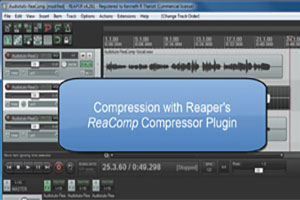 I just had my first audio recording tutorial video published by
I just had my first audio recording tutorial video published by 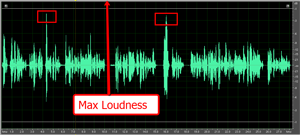
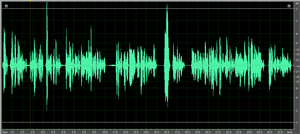
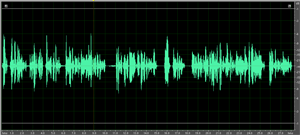
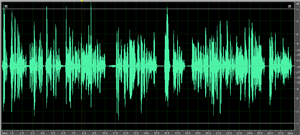
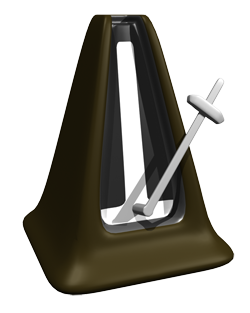 The click track is a tool in audio recording, especially for recording music, that allows a person to hear the tempo or timing information of project. For example, in
The click track is a tool in audio recording, especially for recording music, that allows a person to hear the tempo or timing information of project. For example, in  This will then play through the speakers and headphones when in Record or Play mode.
This will then play through the speakers and headphones when in Record or Play mode. The second option is to not use the metronome at all. That’s what I do. You simply create a new track (ctrl-T), change the Input to MIDI and insert a virtual instrument drum program using the FX button. Then simply record a measure or two of drum hits. I usually use a kick, hi-hat and snare. Edit the MIDI file (double-click on the item in the track) to make sure your hits are on the right beats. Then trim the MIDI item to make sure it is exactly one measure long and starts exactly on beat #1. Then all you have to do is drag the right edge of the MIDI item to the right (this loops it) for the length of the song.
The second option is to not use the metronome at all. That’s what I do. You simply create a new track (ctrl-T), change the Input to MIDI and insert a virtual instrument drum program using the FX button. Then simply record a measure or two of drum hits. I usually use a kick, hi-hat and snare. Edit the MIDI file (double-click on the item in the track) to make sure your hits are on the right beats. Then trim the MIDI item to make sure it is exactly one measure long and starts exactly on beat #1. Then all you have to do is drag the right edge of the MIDI item to the right (this loops it) for the length of the song.
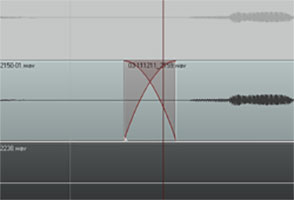 So what exactly does it mean to “crossfade audio”? Well before we talk about crossfading, we should probably first talk about just plain old regular fading. What is a fade?
So what exactly does it mean to “crossfade audio”? Well before we talk about crossfading, we should probably first talk about just plain old regular fading. What is a fade?

